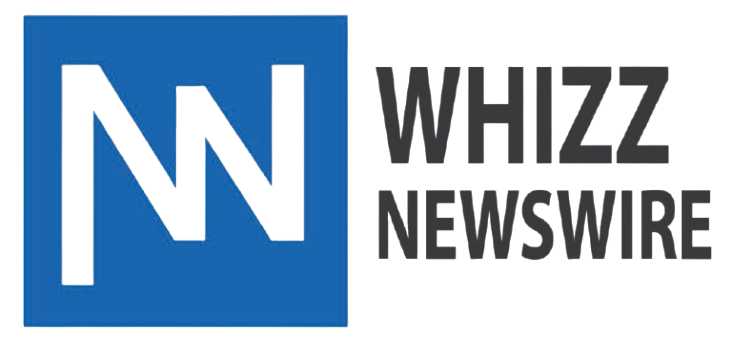When you hear the word “BlackRock,” you’re not just talking about a financial firm, you’re talking about one of the most influential institutions in global finance. It’s not a bank, not a hedge fund, and not a traditional investment company in the narrow sense. Instead, BlackRock has built something bigger: a financial ecosystem, with trillions of dollars flowing through its digital and physical pipelines.
So what exactly is BlackRock’s net worth in 2025? The short answer: it’s valued at over $170 billion in market capitalization, and it oversees more than $11.5 trillion in assets under management (AUM). But that doesn’t even begin to tell the full story.
Let’s explore how BlackRock became one of the most powerful financial players in the world and how its “net worth” reflects far more than just a dollar figure.
What Does “Net Worth” Mean for a Company Like BlackRock?
Unlike individuals, whose net worth is based on assets minus liabilities, a company’s net worth is typically measured in terms of market capitalization, the total value of all its outstanding shares.
As of July 2025:
- BlackRock’s Market Capitalization is approximately $170–171 billion.
- Enterprise Value, which includes debt and cash holdings, is slightly higher at around $177 billion.
- Book Value (Net Assets) is roughly $50 billion.
So yes, BlackRock’s own “net worth” as a company is massive, but it’s important to understand: BlackRock doesn’t make its money from owning all the assets it makes its money by managing them. And it manages more than anyone else in the world.
Assets Under Management: The $11.5 Trillion Empire
Perhaps the most jaw-dropping number associated with BlackRock is its AUM (Assets Under Management) , the total amount of money it manages for clients across the globe.
In early 2025, that figure sits at an astonishing:
$11.5–$11.6 trillion
These assets include:
- Retirement funds
- Sovereign wealth funds
- ETFs (through its iShares division)
- Institutional investments
- Alternative assets like real estate, infrastructure, and private equity
This is not money BlackRock owns. Rather, it earns management fees on these assets, which can add up to billions of dollars per year, depending on the types of assets and contracts involved.
BlackRock’s Expansion Strategy: Beyond Wall Street
To maintain and grow this empire, BlackRock has moved aggressively into private markets and infrastructure, aiming to capture higher-margin business.
Here are just a few major moves:
- In 2024, BlackRock acquired Global Infrastructure Partners (GIP) in a $12.5 billion deal, expanding its footprint in infrastructure investing.
- In early 2025, it announced plans to acquire HPS Investment Partners, one of the world’s largest private credit managers, as part of a $10 billion expansion into alternative lending.
- It also acquired ElmTree Funds, focusing on logistics real estate, and made a strategic investment in Preqin, a private market data platform.
Altogether, these moves are designed to grow BlackRock’s private market AUM to $400 billion by 2030, a strategic goal that would increase its revenue share from alternatives from 10% today to 30%+ within five years.
How BlackRock Makes Money
So, where does the company’s actual income come from?
Revenue Sources:
- Investment Management Fees Charged as a percentage of AUM.
- Performance Fees On private funds that outperform benchmarks.
- Technology Licensing Through its Aladdin platform, a powerful risk management and portfolio analytics tool used by financial institutions worldwide.
- Consulting & Advisory To central banks, governments, and large institutions.
- Shareholder Dividends & Equity Growth As a public company, BlackRock also reinvests in itself and pays dividends to shareholders.
In 2024, BlackRock posted $1.67 billion in quarterly net income, up over 20% year-over-year. The firm also reported $641 billion in net inflows money that investors entrusted to BlackRock to manage.
Financial Breakdown (2025)
| Metric | Value (2025 Estimate) |
| Market Capitalization | $170–171 billion |
| Enterprise Value | ~$177 billion |
| Book Value (Net Assets) | ~$50 billion |
| Assets Under Management (AUM) | $11.5–11.6 trillion |
| Annual Net Income | ~$6.5 billion |
| Net Inflows (2024) | $641 billion |
| Private Market AUM Goal | $400 billion (by 2030) |
Why Is BlackRock So Influential?
It’s not just about money, it’s about control and infrastructure.
- Aladdin, BlackRock’s proprietary tech platform, is used by over 100 institutions worldwide to manage $21 trillion in assets. This gives BlackRock real-time insight into global markets.
- It has deep relationships with governments, including the U.S. Treasury, which tapped BlackRock during the 2008 financial crisis and again in the 2020 pandemic to manage emergency bond-buying programs.
- Through iShares ETFs, it controls a large portion of passive index investing, influencing global equity flows.
In short, BlackRock is the operating system of modern finance.
Final Thoughts: A Company Bigger Than Countries
BlackRock’s “net worth,” if you define it by market cap, sits at around $170 billion. But its economic influence and financial reach far exceed that figure. With $11.5 trillion in assets under management, cutting-edge financial technology, and a growing presence in alternative markets, BlackRock is more than just a firm; it’s a pillar of global capitalism.
Whether you see that as a sign of financial innovation or a concentration of too much power in one company, there’s no denying that BlackRock’s financial story is one of extraordinary growth, strategy, and ambition.
For similar content visit here




